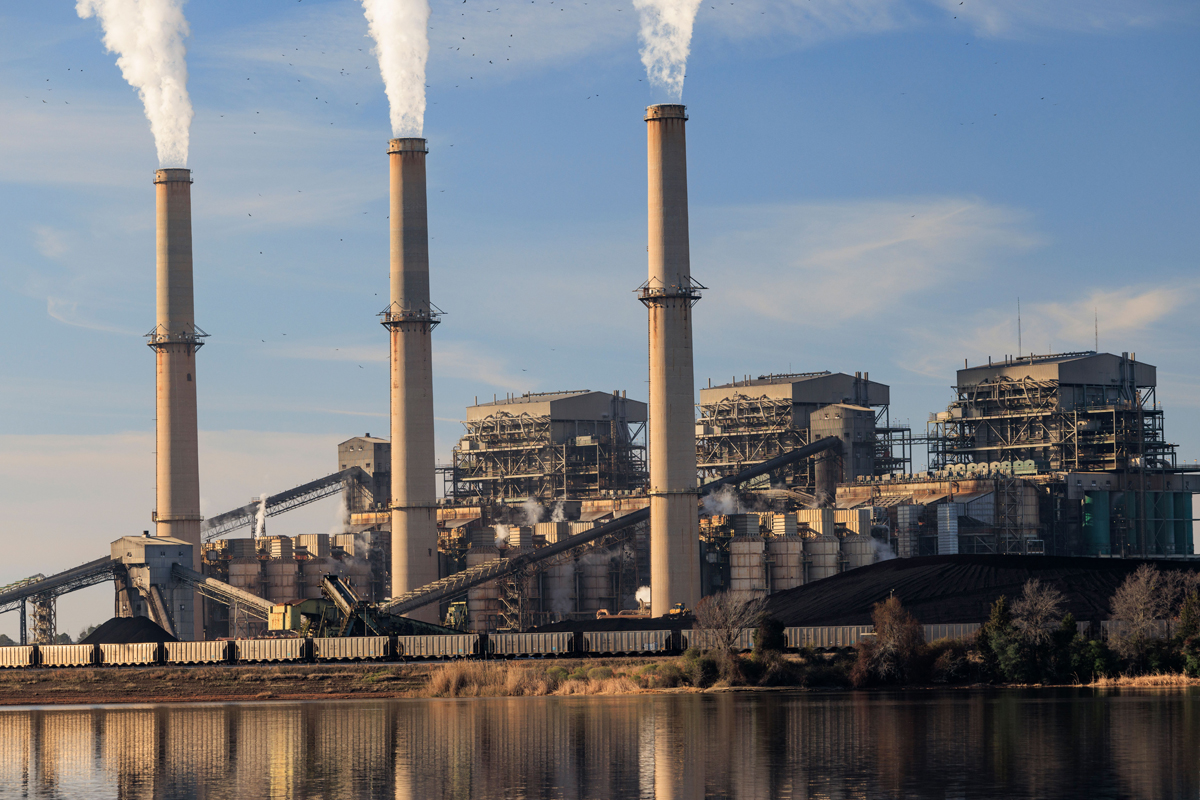Living near the Vistra Martin Lake coal plant in Texas is a health hazard, says Paulette Goree, a volunteer with the Sierra Club’s Beyond Coal campaign. The Rusk County coal plant is the nation’s largest source of sulfur dioxide and mercury pollution, and its neighbors feel the impacts daily.
“There are lots of things I used to do outside that I can’t do anymore because of my respiratory issues,” said Goree. “I used to jog, but I can’t do that anymore.”
Goree and her husband live with asthma and chronic obstructive pulmonary disease. Many of her neighbors, she says, have been lost to cancer.
“Living so close to it we see stuff in the air sometimes, things floating in the air, and we can smell the sulfur,” said Goree, referring to ash in the air. “That makes us concerned about the quality of our air and concerned about what we’re breathing into our lungs.”
Martin Lake regularly emits more of the air pollutant sulfur dioxide than is safe for people to breathe, according to Texas’s own air-quality monitors. Exposure to elevated levels of sulfur dioxide pollution for just a short time can make it hard to breathe, and prolonged exposure can make you more likely to get sick and experience loss of smell. Chronic exposure is also associated with deadly lung and heart conditions. Children, the elderly, and people with asthma are most affected by sulfur dioxide pollution. And Martin Lake’s sulfur dioxide pollution contributes to fine particulate matter which travels downwind, endangering families across Texas.
What’s more, the Martin Lake plant is so outdated and dirty that it’s violating a number of Environmental Protection Agency pollution standards:
Sulfur Dioxide Nonattainment: Martin Lake is the nation’s largest source of sulfur dioxide pollution. The EPA made the determination that Martin Lake is out of compliance with the sulfur dioxide public health standards, but the Texas Commission on Environmental Quality’s proposed plan fails to do enough to protect communities near Martin Lake.
Regional Haze Rule: The plant’s sulfur dioxide pollution travels across the state, impacting health and reducing visibility in nearby national parks, causing it to violate the EPA’s Regional Haze rule. Yet the plant does not have modern pollution control for sulfur dioxide pollution.
Coal Ash Discharge: Coal ash is the toxic byproduct of burning coal for electricity. Martin Lake generates wastewater from handling dangerous coal ash waste and needs to do more to protect Texas surface water from this pollution.
Cross State Air Pollution: Martin Lake’s dangerous nitrogen oxide pollution adds to ozone problems (aka smog) for communities in Texas and states downwind. The plant still does not have modern pollution controls for nitrogen oxide pollution.
Start-Up, Shut-Down, Malfunction: Coal plants can belch out particularly harmful levels of pollutants during startup, shutdown, and malfunction events. Loopholes that let polluters avoid liability for exceeding emission limitations during such events are unlawful, but the Trump EPA allowed Texas' state pollution control plan to include these loopholes. The EPA is now reconsidering that rule. Oftentimes this kind of pollution is dangerous, dirty soot emitted directly from the stacks. Martin Lake does not have modern pollution controls for soot emissions.
Mercury and Air Toxics Rule: This rule limits toxic emissions from coal and oil-fired power plants. Martin Lake is the worst mercury polluter in the country.
Goree and her family used to fish at the coal plant’s reservoir. Now she avoids the area because of mercury pollution. “We won’t eat the fish,” she said. “We used to bring them home and eat them. But then we got scared when fish started dying in the lake. If it kills the fish, what do you think it’ll do to us?”
The Sierra Club’s Beyond Coal campaign is working to get the plant to abide by pollution rules and, ultimately, retire. In 2017, the EPA determined that the area immediately around Martin Lake is out of compliance with public health standards for sulfur dioxide levels. Texas was supposed to submit a plan to address the sulfur dioxide pollution by July 2018. But instead of creating a plan to protect the communities near Martin Lake, it joined with plant owner Vistra to sue the EPA, allowing the Martin Lake plant to continue polluting. Although litigation is ongoing, the EPA changed its position and directed the state to propose a clean-up plan.
In February of this year, the Texas Commission on Environmental Quality finally proposed a plan to address Martin Lake’s dangerous levels of sulfur pollution – but that plan is weak and legally insufficient. The Sierra Club is urging the EPA to reject this insufficient and inadequate plan, and ensure Martin Lake residents are truly protected from dangerous air pollution by modern pollution controls.
Goree urges more people to get involved in helping to clean up and retire the plant. “I”m involved because I have so much family here and so much to lose,” she said. “My brothers and sisters are suffering from respiratory problems. I’ve suffered from breathing problems in my own home. Health is of the utmost importance to me.
“It's time for Martin Lake to clean up so that those of us that live near the plant can all breathe cleaner air and live healthier lives.”
